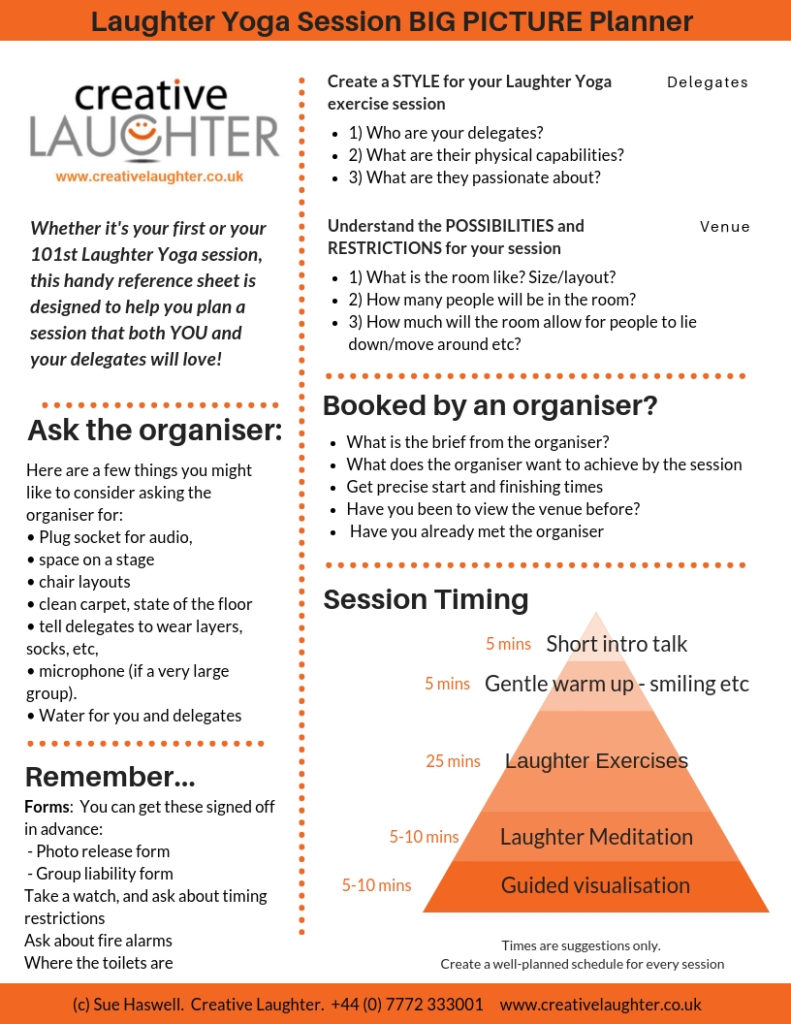Team building activities are essential for nurturing a positive and cohesive work environment. While traditional team building exercises have their merits, incorporating innovative and unique approaches can take team bonding to a whole new level. Laughter Yoga, a practice that combines laughter exercises with deep breathing, offers a refreshing and effective way to boost team morale, improve communication, and strengthen interpersonal relationships. In this article, we explore how Laughter Yoga can be used as a powerful tool for team building.
Icebreaking and Energizing:
Need an ice-breaker? Well Laughter Yoga serves as an excellent icebreaker activity, breaking down barriers and creating an atmosphere of positivity and camaraderie. Laughter is contagious, and engaging in laughter exercises together helps team members let go of inhibitions, connect on a deeper level, and release stress and tension. Laughter Yoga energizes the team, setting a vibrant tone for the rest of the team building activities.

Strengthening Communication:
Effective communication is vital for successful teamwork. Laughter Yoga promotes non-verbal communication, as participants engage in laughter without the need for words. This shared experience helps team members develop a sense of understanding and empathy, enhancing their ability to communicate effectively. Laughter Yoga exercises also improve active listening skills, as participants must pay attention to each other’s laughter cues and respond accordingly.
Building Trust and Collaboration:
Trust is the foundation of any high-performing team. Laughter Yoga fosters trust by creating a safe and non-judgmental space for team members to let loose and be vulnerable. Through shared laughter, team members develop a sense of camaraderie, building trust and rapport. As participants engage in laughter exercises together, they learn to collaborate, synchronize their laughter, and create a collective experience that strengthens the bonds between team members.
Stress Reduction and Resilience:
Workplace stress can take a toll on team members’ well-being and productivity. Laughter Yoga is an effective stress management tool, as it releases endorphins and reduces cortisol levels, promoting a sense of relaxation and rejuvenation. By incorporating regular laughter exercises, teams can reduce stress levels, increase resilience, and create a positive work environment. Laughter acts as a natural stress reliever, helping team members cope with challenging situations and bounce back quickly.
Enhancing Creativity and Innovation:
Laughter Yoga stimulates creativity and innovative thinking. When individuals are in a relaxed and joyful state, their minds are more receptive to new ideas and alternative perspectives. Engaging in laughter exercises during team building sessions sparks creativity, encourages brainstorming, and promotes a playful mindset. This creative energy can lead to fresh insights, innovative problem-solving, and a more dynamic and productive team.

Improving Morale and Motivation:
High team morale and motivation are crucial for sustained team success. Laughter Yoga uplifts team spirit and boosts morale by creating a positive and joyful atmosphere. Laughing together creates a shared experience of happiness and optimism, fostering a sense of belonging and team pride. As team members feel motivated and valued, their enthusiasm and dedication to their work increase, resulting in enhanced productivity and overall team performance.
Enhancing Emotional Intelligence:
Laughter Yoga helps develop emotional intelligence among team members. As participants engage in laughter exercises, they become more attuned to their own emotions and those of their teammates. This heightened emotional awareness promotes empathy, understanding, and the ability to respond sensitively to others. Improved emotional intelligence strengthens interpersonal relationships and enhances collaboration within the team.
Long-lasting Positive Impact:
One of the remarkable aspects of Laughter Yoga is its long-lasting effects. The positive emotions and connections created during laughter sessions extend beyond the activity itself. Team members carry the sense of joy, unity, and positivity into their daily interactions, resulting in improved teamwork, increased job satisfaction, and a supportive work culture.
Laughter Yoga builds great teams, in summary:
Laughter Yoga can be a unique and effective tool for team building, helping to improve team dynamics and performance. By incorporating laughter exercises into team building activities, organizations can create a positive and cohesive work environment, fostering communication, trust, creativity, and resilience among team members. Embracing the power of laughter ensures that team building becomes a fun and memorable experience that positively impacts the overall success of the team.
If you’ve not tried Laughter Yoga before for your team, then get in touch and ask about it. As well as being a powerful team-building took – it’s a laugh!


 to suit different ages and requirements, the principles are the same – using the beneficial psychology and physiology of Laughter training to bring about positive and deep-seated effects.
to suit different ages and requirements, the principles are the same – using the beneficial psychology and physiology of Laughter training to bring about positive and deep-seated effects.




